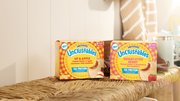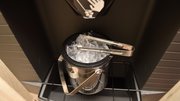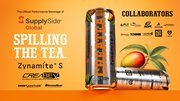Blog
Understanding Market Needs Is Key To OCS Foodservice Sales
November 26, 2015 | Len Rashkin
TAGS: Vending Times columnist, OCS salespeople, office coffee service, office coffee sales, OCS education, OCS customer service, coffee business, office refreshments, OCS sales training, Len Rashkin, food service, coffee for for foodservice, restaurant coffee services |
Office refreshment service was originally developed to serve just business offices, but over the years it has evolved to serve all types of workplace clienteles. We now provide service to industrial plants, warehouses, retail shops, medical facilities, hospital waiting rooms and auto service companies, among a host of other businesses. Servicing these companies has allowed providers to purchase espresso makers, vending machines, non-vending pre- and post-mix beverage single-cup equipment, coffee grinders, refrigerators, microwaves, icemakers and water coolers. But the market that was largely untapped for years by OCS was foodservice, including restaurants, bagel shops, convenience stores and cafeterias, as well as national chains.
This month I'd like to look at what is needed to serve this vast number of foodservice outlets. We'll cover this topic in two parts to give a full overview of the proper way to meet the needs of this market.
When developing your sales approach, your corporate mindset has to be based on your recognition that these providers make their livings by selling beverages to their customers; therefore, their customers must be satisfied enough with your products to return to enjoy them again and again. Here is a list of some of the necessary products and services that you must have in your war chest if you're going to serve foodservice operations.
1. Twenty-four/seven service to maintain brewers and equipment. Foodservice operators can't afford downtime.
2. Products that span a wide spectrum, so providers have choices in meeting the preferences of the market they are targeting:
a. National and regional brands.
b. Coffee that meets criteria as "specialty," "good-quality" and "generally accepted."
3. Equipment that is heavy-duty for restaurant use, providing the utmost dependability.
4. Equipment that is able to serve a large number of patrons in a timely manner. Waiting in long lines is not an option in the foodservice sector.
5. Equipment that can be cleaned easily and serviced in a timely manner by establishments, in order to satisfy foodservice health codes and laws.
6. Equipment that is streamlined, so as not to take up lots of counter or shelf space, both of which are a premium in retail foodservice locations.
7. Equipment that is attractive, which can match the décor of the client's location.
8. Service and delivery personnel who are clean-cut, communicative, uniformed and bondable. Outside service staff must be well trained themselves, in order to train the account's foodservice staff in the proper operation of all equipment.
9. Salespeople who are well-trained to understand the workings of all foodservice equipment, as well as the electrical requirements of these units. They must understand the selling points (features and benefits) of your company, equipment and services. In addition to knowing how to train foodservice staff in using and maintaining your equipment, they must be comfortable with being "hands on" to continually train new staff members on grinding and brewing coffee, preparing espresso and creating cappuccino and lattes, among other gourmet beverages.
Looking at your arsenal of coffee and espresso equipment must be done with an eye to a market whose needs are very different from those of a large office. Offices usually have a few short peak periods (beginning of workday, midmorning, lunch break, midday and meetings) in which your equipment must serve the staff quickly. In foodservice, depending on the type and the location of the business, you -- as an operator -- must have brewers that can keep up with heavy demand throughout the workday. These may include several high-capacity coffee/espresso brewers that run on 220/240V. power, speeding recovery of their brewing-water temperature. There are many styles of high-volume brewers, including batch brewers with gallon-plus capacity, the urn style that can produce three to five gallons of coffee, liquid coffee dispensers and single-cup pregrind and postmix units.
Espresso machines come in one- to five-group models. A "group" is one brewing head that can make one or two espresso shots at one time. There are sophisticated semiautomatic and fully automatic designs with which one push of a button can prepare an espresso, cappuccino or latte. Remember that training is imperative for the successful operation of any espresso beverage machine. You may want to consider using espresso pods, which are a bit more costly, but deliver consistent brew quality and require little training on the art of making espresso. Foodservice management will not have to worry about constantly training new staff on espresso-making, but still will have to know how to froth the milk for espresso-based drinks.
As I mentioned, this article will be in two parts. Next month I will focus on each category of foodservice providers. These include restaurants, from casual and light-menu spots to white-tablecloth establishments; cafeterias (in-house); fast food, whether it's eat-in, takeout or convenience store; and delis and groceries, which are almost always carryout.
If you would like to discuss your marketing plan and programs for supporting foodservice clients, I can be reached at (516) 241-4883 or OCSconsultant@aol.com.
LEN RASHKIN is a pioneer in office coffee service. He founded Coffee Sip in 1968 and later merged it with Dell Coffee, of which he became president in 1991. Sales at Dell topped $7 million. He also founded the Eastern Coffee Service Association and National Beverage & Products Association. He is a speaker at national and local trade conferences, consults on OCS sales and marketing, and is the author of two OCS training programs.







